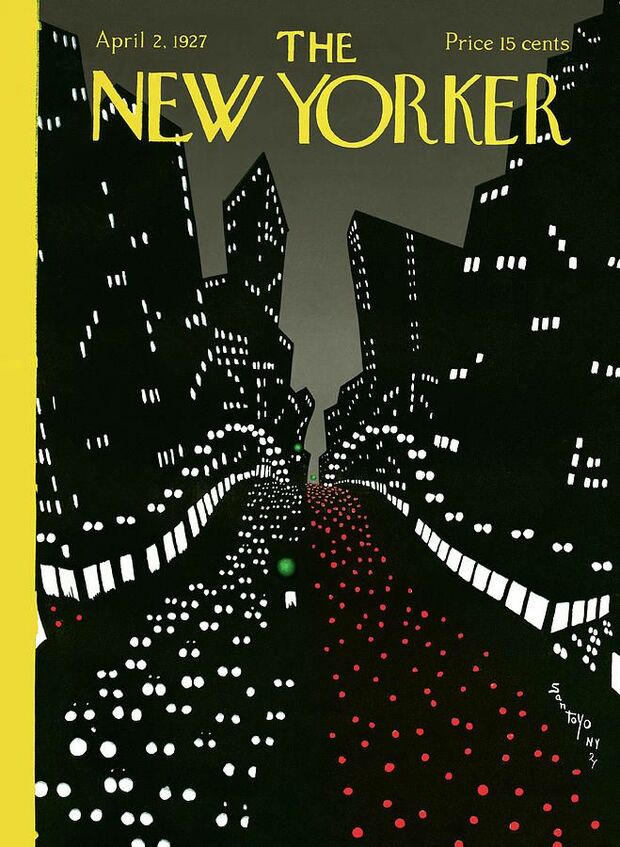The New Yorker — modern dandy among magazine covers

Every year 47 issues of The New Yorker Magazine emerge to the delight of the intellectual audience worldwide. Over almost a century of publication, the magazine has gained a reputation as one of the most prestigious print publications, not only in New York City, but also in the United States and all around the world. Publication in «The New Yorker» was the start of american career for many non-american authors, such as Nabokov or Brodsky. In addition to witty texts and traditional spelling, the distinctive feature of «The New Yorker» is its illustrative covers. Throughout the magazine's existence, cover illustrations of various styles have been featured, while the Irvin font, named after the first artist of the magazine, has remained constant.
Eustace Tilley
The very first cover of the magazine depicts a representative of its audience. Rea Irvin, the first art editor of The New Yorker, portrayed an American dandy observing a butterfly through a monocle. This was the editorial team's perception of its target audience, which largely determined the magazine's direction. The gentleman on the cover, created by satirist Corey Ford, was named Eustace Tilley. Later, Eustace appeared in the same year in the August series of comics titled «The Making of a Magazine» and became the unofficial mascot of the magazine.
«View of the World from 9th Avenue»
One of the most famous covers of the magazine is Saul Steinberg's illustration. The painting depicts Manhattan as the center of the world and is a caricature of the «limited mental geography of New Yorkers» (according to the list of the greatest 40 magazine covers of the prior 40 years by ASME). Numerous parodies of this cover led to a series of copyright lawsuits, the most famous of which was the lawsuit against Columbia Pictures for the poster of the film «Moscow on the Hudson». However, Steinberg himself stated that the fame of this illustration diminished its significance to the level of «the man who did that poster».
9/11
The cover of the September 24, 2001 issue of The New Yorker appears completely black at first glance, but upon closer inspection, you can see the silhouette of the Twin Towers that reveals. The illustration, dedicated to the memory of the 9/11 terrorist attack victims, also made it to the top 10 list of the 40 best magazine covers by ASME with the following comment:
«New Yorker Covers Editor Francoise Mouly repositioned Art Spiegelman's silhouettes, inspired by Ad Reinhardt's black-on-black paintings, so that the North Tower's antenna breaks the "W" of the magazine's logo. Spiegelman wanted to see the emptiness, and find the awful/awe-filled image of all that disappeared on 9/11. The silhouetted Twin Towers were printed in a fifth, black ink, on a field of black made up of the standard four color printing inks. An overprinted clear varnish helps create the ghost images that linger, insisting on their presence through the blackness.»
«New Yorkistan»
The cover of The New Yorker on December 10, 2001, created by Maira Kalman and Rick Meyerowitz, was inspired by a conversation during a trip through the Bronx. It depicts the neighborhoods of New York City, as well as individual blocks within the city, each given a humorous Middle Asian-style name («a funny mixture of Yiddish, Persian, and New Yorkisms»), based on the history or geography of that territory. The illustration itself was named «New Yorkistan». The cover gained unexpected popularity, and by February 2002, «The New Yorker» had earned approximately $400,000 by selling copies of the drawing. The illustration once again addresses the theme of New York-centric consciousness and mocks the stereotype of Americans' knowledge of geography. Interestingly, according to American scholar Susan Jarrett, this was the first «humorous intervention» in public after the events of September 11. Maira Kalman herself commented that if [the cover had come] out earlier, many would have been infuriated, and if it [had come] out later, no one would have cared.